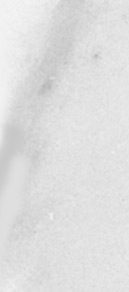

Prentice Hall and Sun Microsystems. Personal use only; do not redistribute.
16.2 The FORM Element
391
not return results (e.g., for accepting orders for products). You must use
the
POST
method (see
METHOD
in the following subsection) when using a
mailto
URL.
METHOD
The
METHOD
attribute specifies how the data will be transmitted to the
HTTP server. When
GET
is used, the data is appended to the end of
the designated URL after a question mark. For an example, see Sec
tion 16.1 (How HTML Forms Transmit Data).
GET
is the default and is
also the method that is used when a browser requests a normal URL.
When
POST
is used, the data is sent on a separate line.
The advantages of using the
GET
method are twofold: the method is
simple; and with servlets that use
GET
, users can access those servlets
for testing and debugging without creating a form, simply by entering
a URL with the proper data appended. On the other hand, due to
URL size restrictions on some browsers,
GET
requests have limits on
the amount of data that can be appended, whereas
POST
requests do
not. Another disadvantage of
GET
is that most browsers show the URL,
including the attached data string, in an address field at the top of the
browser. This display makes
GET
inappropriate for sending sensitive
data if your computer is in a relatively public place.
ENCTYPE
This attribute specifies the way in which the data will be encoded
before being transmitted. The default is
applica
tion/x www form urlencoded
, which means that the client converts
each space into a plus sign (+) and every other nonalphanumeric char
acter into a percent sign (%) followed by the two hexadecimal digits
representing that character (e.g., in ASCII or ISO Latin 1). Those
transformations are in addition to placing an equal sign (
=
) between
entry names and values and an ampersand (
&
) between entries.
For example, Figure 16 5 shows a version of the
GetForm.html
page
(Listing 16.1) where
Marty (Java Hacker?)
is entered for the first
name. As can be seen in Figure 16 6, this entry gets sent as
Marty+%28Java+Hacker%3F%29
. That's because spaces become plus
signs, 28 is the ASCII value (in hex) for a left parenthesis, 3F is the
ASCII value of a question mark, and 29 is a right parenthesis.
Second edition of this book: www.coreservlets.com; Sequel: www.moreservlets.com.
Servlet and JSP training courses by book's author: courses.coreservlets.com.
footer
Our partners:
PHP: Hypertext Preprocessor Best Web Hosting
Java Web Hosting
Jsp Web Hosting
Cheapest Web Hosting
Visionwebhosting.net Business web hosting division of Web
Design Plus. All rights reserved


